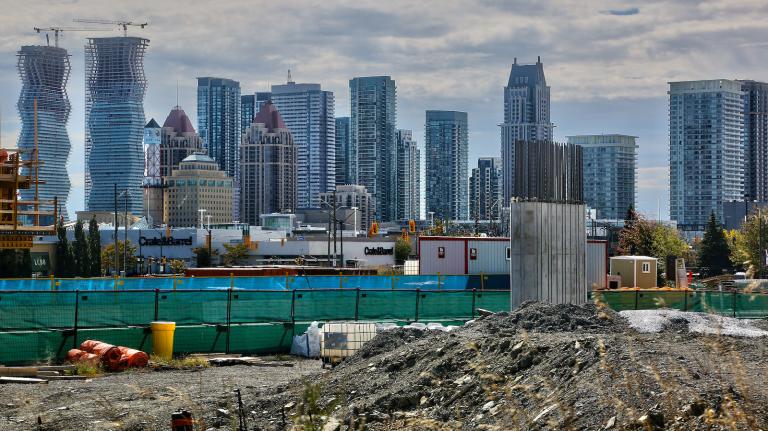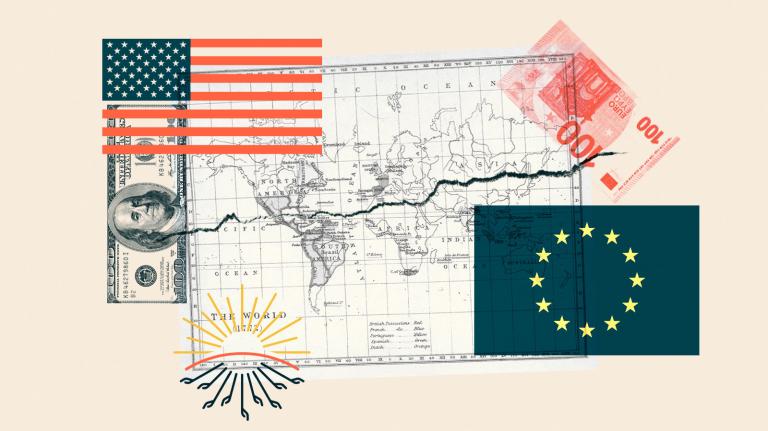Wednesday was “Finance Day” at COP27, this year’s United Nations climate conference in Sharm el Sheikh, Egypt, and U.S. climate ambassador John Kerry took the opportunity to make a bold pitch. To help developing economies transition from coal to clean energy, Kerry proposed creating a new carbon market — a way for corporations to fund efforts to decommission coal plants and build wind and solar projects in exchange for carbon credits that can be used to bolster their green image.
Even as coal use has declined significantly in the U.S. and Europe, coal is still king when it comes to how most of the world meets its energy needs. Coal supplies more than one-third of the world’s electricity generation and is also the single largest source of energy-related carbon emissions.
Last year’s United Nations climate conference in Glasgow ended in a new agreement among countries to “phase down” — although not phase out — coal. Now, at this year’s conference, world leaders are debating how to actually do that, especially in developing economies where investment in clean energy has lagged.
In remarks announcing his “Energy Transition Accelerator” initiative at COP27 on Wednesday, Kerry said that as he has traveled the world, leaders have told him that the single biggest obstacle to transitioning to clean power is the absence of funding. “No government in the world has enough money to get this job done,” Kerry said. “We will only succeed with a massive infusion of private capital.”
His carbon market pitch was bold because carbon credits are one of the most maligned and historically ineffective strategies for cutting emissions on the international stage. Just one day before, a United Nations-appointed expert panel published guidelines for credible corporate climate action that warned companies against buying “cheap credits that often lack integrity instead of immediately cutting their own emissions across their value chain.”
Carbon credit schemes — which have ranged from paying companies to destroy climate super-pollutants, to paying landowners not to cut down their trees, to funding renewable energy projects in developing countries — have a long history of failing to deliver the climate benefits they set out to create. “We’ve just had two decades of really well-meaning, really smart people trying to make it work,” said Raphael Calel, environmental economist at Georgetown University. “And as far as I can tell, all of the really solid evidence so far reaches the conclusion that it doesn’t really work.”
In the case of renewable energy, one reason it doesn’t work is that wind turbines and solar panels are already so cheap in most of the world that the money from carbon credits doesn’t lead to more projects. Calel published a paper last year on carbon credits that purportedly supported the development of wind farms in India under an earlier international carbon trading program called the Clean Development Mechanism. He found that at least half of the wind farms would have been built regardless. The evidence was that in each of these cases, there was another wind project built in the same area that was inferior in terms of size and location, but was completed without revenue from carbon credits.
In his remarks on Wednesday, Kerry acknowledged “past abuses” that have discredited carbon markets but said that “with the right safeguards, crediting can be done well.”
The proposal was light on details but made several suggestions to ensure the integrity of the program. For one, credits could be created and sold by governments rather than individual energy developers. The idea is that this so-called “jurisdictional approach” would enable governments to use the market to achieve strategic energy transition plans, “incentivizing system-wide transformation” while also directing money to discrete projects.
Kerry’s plan also suggests limits on who can buy credits and what the credits can be used for. For example, fossil fuel companies would not be allowed to participate, nor would companies that don’t have science-backed plans to cut their emissions to net-zero by 2050. Qualifying companies would only be able to use credits to support climate action “above and beyond” their targets, or to “contribute to climate finance or other voluntary goals” — meaning they wouldn’t be able to buy them in place of cutting emissions.
It’s unclear whether companies would actually want to buy credits for any of these purposes. As if anticipating that issue, the proposal includes another “approach to be explored” — potentially allowing companies to use the credits to offset emissions that they don’t directly control, like those from their supply chains. For many companies, this is the source of 80 to 90 percent of their emissions.
Ani Dasgupta, the president and CEO of the nonprofit World Resources Institute, cautiously welcomed the proposal in a call with reporters on Wednesday. Dasgupta said that hundreds of billions of dollars are flowing into renewable energy — but most of the money is going to the Global North.
The World Resources Institute has found that the decommissioning of coal has to speed up by a factor of six in order to limit global warming in line with the Paris Agreement. Dasgupta stressed that Kerry’s initiative would have to be one of many tools deployed to finance the transition from coal, and that it was too early to judge the merit of the proposal.
“This is so high level,” he said. “We don’t know how the mechanism would work, how the money would flow.”



